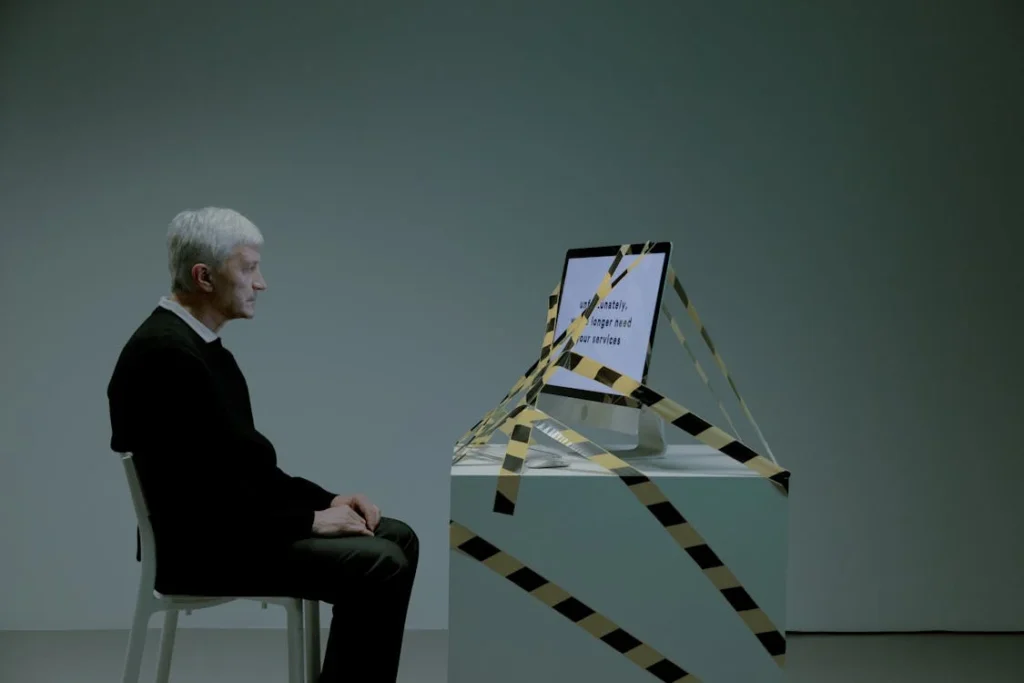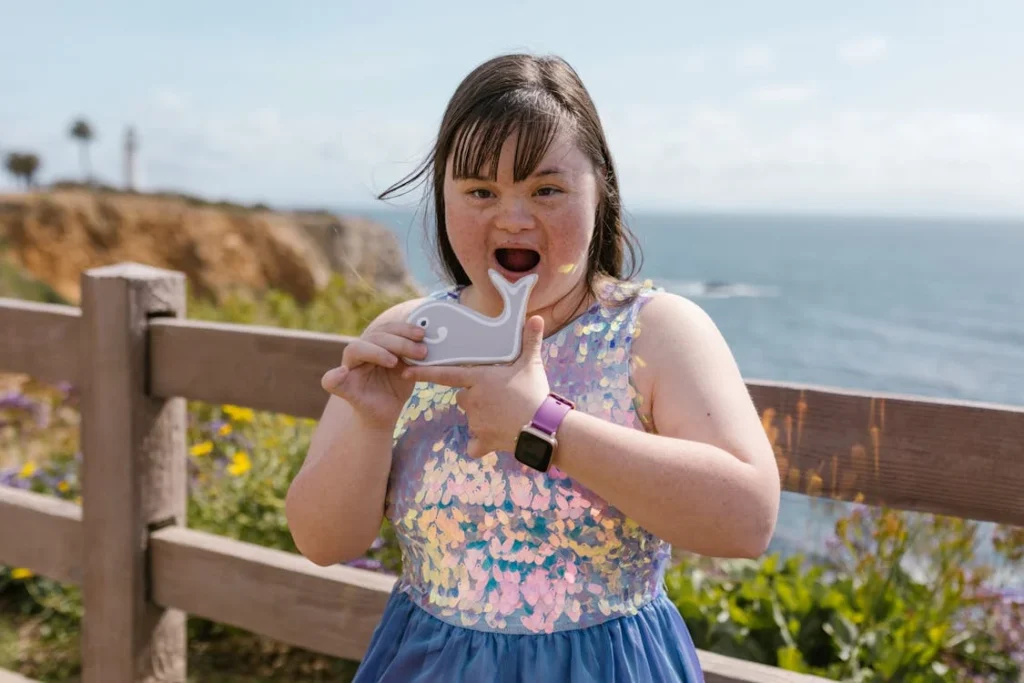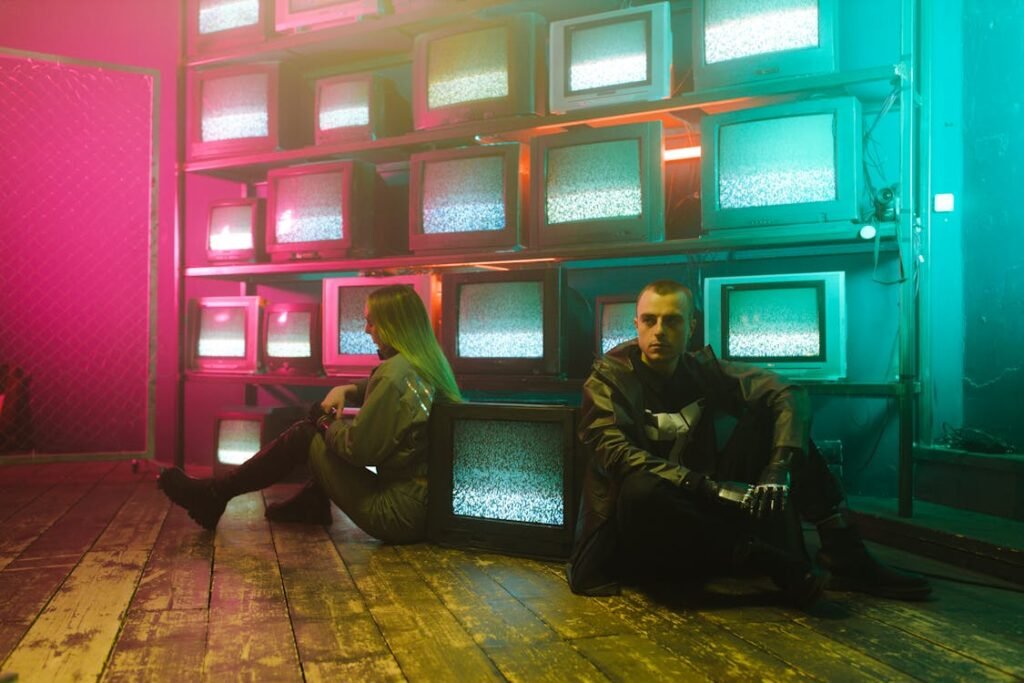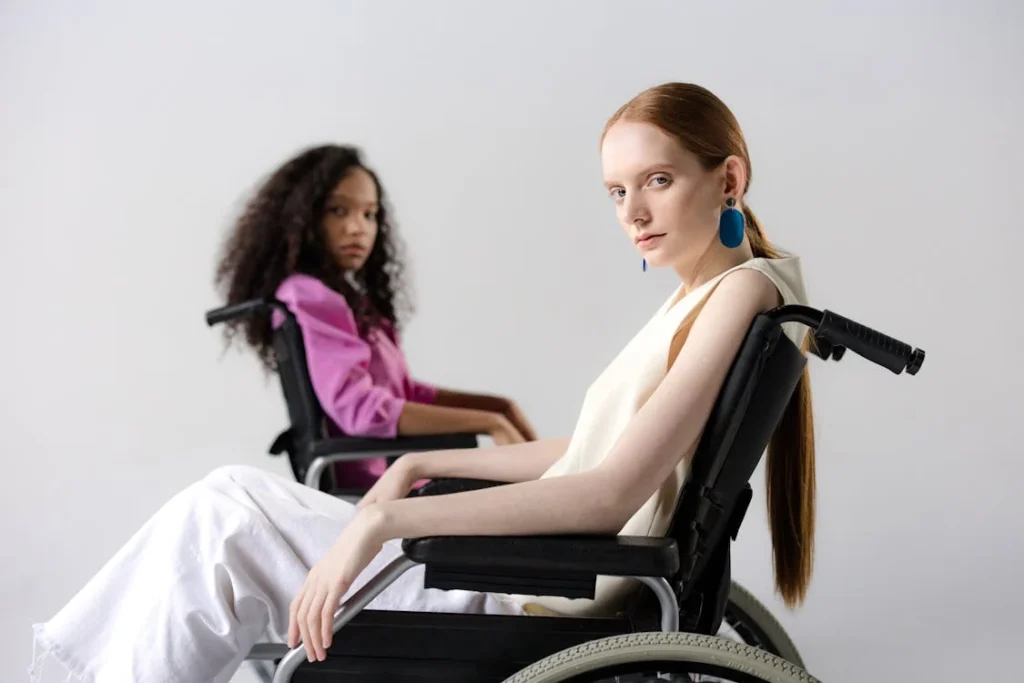The way we see disability is shaped by the stories we hear, the movies we watch, and the news we read. Media and pop culture play a huge role in shaping public opinion. They influence how people with disabilities are treated and how they see themselves.
From blockbuster movies to viral social media posts, disability is often portrayed in ways that either inspire or mislead. Some portrayals break barriers and challenge stereotypes, while others reinforce outdated ideas. The impact of these representations can be life-changing. They affect everything from social acceptance to job opportunities.
Understanding how media shapes disability perceptions is important for building a more inclusive world. In this article, we will explore how different forms of media—films, television, social media, and news—affect the way society sees disability.

The Power of Media in Shaping Disability Perceptions
Media has the power to shape how we see the world. It tells stories that create emotions, change opinions, and build cultural norms. For people with disabilities, media can either be a tool for empowerment or a barrier that reinforces harmful stereotypes.
The way disability is portrayed in movies, TV shows, news reports, and even advertisements affects how society treats individuals with disabilities in everyday life.
How Movies and TV Shape Perceptions
Movies and television shows are among the most influential forms of media. They reach millions of people and create lasting impressions.
When a character with a disability is shown in a film or a series, their portrayal influences how audiences think about real-life disabilities.
Unfortunately, many films and TV shows still rely on outdated stereotypes. Some portray people with disabilities as helpless individuals who only exist to inspire others. Others show them as villains, using their disability as a sign of their supposed weakness or anger.
There have been positive portrayals as well. Films like The Theory of Everything and A Beautiful Mind have shown complex, multi-dimensional characters with disabilities.
These stories focus not only on their struggles but also on their strengths, intelligence, and achievements. However, many roles of disabled characters are still played by non-disabled actors, which raises concerns about authentic representation.
When people with disabilities do not see themselves accurately portrayed on screen, it limits their opportunities and reinforces the idea that their stories are best told by others.
The Role of Social Media in Changing Narratives
Unlike traditional media, social media gives people with disabilities a platform to share their own stories. This has helped shift the narrative by allowing them to speak for themselves rather than being spoken about.
Platforms like Instagram, TikTok, and YouTube have enabled disability activists and influencers to showcase their daily lives, challenges, and triumphs. This direct communication challenges stereotypes and helps society see disability as a normal part of human diversity.
Hashtags like #DisabledAndProud and #NothingAboutUsWithoutUs have given rise to strong communities that promote inclusion and awareness.
People with disabilities now have a space where they can educate others about accessibility, discrimination, and the need for representation. These conversations are changing public perceptions by highlighting real experiences instead of fictionalized ones.
However, social media is not without its challenges. Some viral content portrays disabled individuals in a way that focuses too much on their struggles or treats them as objects of pity.
“Inspiration porn” is a common issue, where stories of disabled individuals overcoming challenges are used to make non-disabled people feel good, rather than actually addressing the barriers they face.
While well-intentioned, this type of content can reduce people with disabilities to symbols of perseverance rather than individuals with full and complex lives.
News Media and Its Influence
News outlets play a crucial role in shaping disability perceptions. When disability is covered in the news, the focus is often on personal struggles, medical advancements, or extraordinary achievements.
While these stories can be inspiring, they rarely address the everyday lives of people with disabilities or the systemic barriers they face.
Disability is often framed in one of two ways in the news—either as a tragedy or as an example of extreme success. Stories of individuals who “overcome” their disability to achieve something great are common, but they can create unrealistic expectations.
The reality is that most people with disabilities lead regular lives, just like anyone else. They should not have to prove their worth by achieving extraordinary things.
On the other hand, when news stories focus only on the difficulties of living with a disability, they can reinforce negative stereotypes. They may create an impression that people with disabilities are solely dependent on others and incapable of leading independent lives.
Balanced reporting is essential to ensure that the narratives around disability are fair and accurate.

The Impact of Stereotypes in Media Representation
The media has long relied on certain stereotypes when portraying people with disabilities. While these portrayals may not always be intentional, they influence how society views disability and can shape public attitudes for generations.
Some of the most common stereotypes include the “helpless victim,” the “superhuman achiever,” and the “tragic burden.” Each of these tropes, while familiar, fails to capture the full reality of what it means to live with a disability.
The Helpless Victim and the Tragic Burden
One of the oldest stereotypes in media is the idea that people with disabilities are helpless or completely dependent on others. This portrayal can be seen in films where disabled characters are portrayed as people who need constant care, with little agency of their own.
The result is a narrative that reinforces the idea that disability is a tragedy, rather than a natural part of human diversity.
Similarly, some portrayals show people with disabilities as burdens to their families and society. These narratives can make disability seem like something to be pitied rather than understood. This perception is harmful because it influences real-life policies and attitudes.
If society sees disability as a burden, governments and organizations may not prioritize accessibility and equal opportunities. Instead of focusing on empowerment, these portrayals can create a culture of exclusion.
The Superhuman Achiever
Another common stereotype is the idea that people with disabilities must accomplish extraordinary feats to be considered valuable. Stories about disabled athletes, scholars, or entrepreneurs who “overcome the odds” are often celebrated in the media.
While these achievements are inspiring, they can create unrealistic expectations. Not everyone with a disability wants to or needs to prove themselves through extraordinary success.
Many simply want to live normal, fulfilling lives without constantly being seen as “inspirational” for doing everyday tasks.
This stereotype can also make life harder for those who struggle with their disabilities. It sends the message that unless they are constantly pushing past their limits, they are not worthy of respect or admiration.
True inclusion means accepting people with disabilities as they are, without expecting them to be either tragic figures or superheroes.
Authentic Representation Matters
The most effective way to change these stereotypes is through authentic representation. When people with disabilities are given the opportunity to tell their own stories, the portrayals become more accurate and meaningful.
This is why it is important for filmmakers, writers, and content creators to work with disabled actors and consultants. Authentic representation allows for a more nuanced depiction of disability that goes beyond clichés and shows the full spectrum of experiences.
Some recent films and television series have started to embrace authentic casting and storytelling. Shows like Special and Sex Education feature disabled actors playing disabled characters, providing a level of realism that was previously lacking in mainstream media.
These productions allow audiences to see disability as part of everyday life rather than as a dramatic plot device.

How Positive Representation Can Drive Change
The way disability is represented in media doesn’t just influence how society views people with disabilities—it also affects how people with disabilities see themselves.
When representation is diverse, realistic, and empowering, it can reshape attitudes, boost confidence, and inspire real change in policies and opportunities.
Changing Perceptions Through Inclusive Storytelling
Inclusive storytelling means representing people with disabilities in ways that are truthful, respectful, and empowering. This means moving beyond the usual tropes and showing disabled individuals as complex people with full lives, ambitions, and relationships.
Instead of being defined by their disabilities, they should be shown as students, parents, professionals, and friends—just like everyone else.
When stories portray disability as just one part of a character’s identity, rather than the defining feature, it normalizes the presence of disabled individuals in everyday life.
This is why shows and movies that include disabled characters without making their disability the entire focus of the story are so important.
A strong example is the animated film Luca, which subtly portrayed a character with a limb difference without making it the central theme of the movie.
Similarly, TV series like Breaking Bad featured a disabled character (played by an actor with cerebral palsy) whose storyline was about much more than his condition.
The Role of Advertising and Marketing
Beyond movies and TV, advertising also plays a key role in shaping perceptions. In the past, disabled individuals were almost invisible in commercials, fashion campaigns, and mainstream advertising.
However, in recent years, brands have started to embrace diversity and inclusion, showcasing people with disabilities in their ads in natural and empowering ways.
Companies like Nike, Tommy Hilfiger, and Mattel have introduced adaptive clothing, prosthetic-friendly shoes, and inclusive toys, demonstrating that disability representation is not just about visibility but also about meeting real needs.
Campaigns featuring disabled models, athletes, and influencers help break down barriers and normalize disability in mainstream culture.
When people with disabilities see themselves represented in media, it sends a powerful message: they belong, they matter, and they have the same right to participate in society as anyone else.
This shift in advertising and branding has also encouraged businesses to create more accessible products and services, making the world more inclusive not just in media, but in everyday life.
The Influence of Celebrity Advocacy
Public figures and celebrities with disabilities have also played a huge role in changing perceptions. Individuals like Paralympians Tatyana McFadden and Oscar Pistorius (before his fall from grace) have shown the world that disability does not limit potential.
Similarly, actors like RJ Mitte (Breaking Bad) and Ali Stroker (Glee, Oklahoma!) have pushed for better representation in the entertainment industry, proving that disabled actors can take on leading roles.
Social media has amplified the voices of disabled influencers, allowing them to challenge stereotypes directly.
People like Aaron Philip, a model with cerebral palsy, and Haben Girma, a deaf-blind lawyer and activist, are using platforms like Instagram and Twitter to educate and advocate for inclusion.
Their visibility is inspiring a new generation of people with disabilities to embrace their identity and demand equal opportunities.

The Real-World Impact of Media on Disability Inclusion
Media and pop culture do not exist in a vacuum. The way disability is portrayed in films, TV shows, news, and advertising directly influences real-world attitudes, policies, and opportunities.
When representation is poor, it reinforces discrimination and exclusion. But when media portrays disability accurately and positively, it can drive real progress in accessibility, employment, and social inclusion.
How Representation Affects Employment and Opportunities
One of the biggest barriers people with disabilities face is access to employment. Media plays a significant role in shaping employer attitudes. If businesses constantly see people with disabilities portrayed as dependent or incapable, they may be less likely to hire them.
On the other hand, positive representation can challenge these biases and prove that disabled individuals can thrive in professional environments.
When people see disabled professionals in movies, TV, or social media, it normalizes the idea that they belong in the workplace. Campaigns featuring disabled entrepreneurs, scientists, or artists help shift the narrative from “Can they work?” to “How can we support their success?”
Some industries have already taken steps to increase inclusion. The fashion industry has embraced disabled models, while major corporations are beginning to highlight accessibility in their hiring practices.
However, there is still a long way to go. Many workplaces remain physically and socially inaccessible, and media needs to continue pushing for change by telling stories that reflect the reality of disabled professionals.
The Role of Media in Shaping Public Policy
Government policies are often influenced by public perception, and media plays a major role in shaping these perceptions. When disability is portrayed as a serious social issue that requires attention, policymakers are more likely to take action.
On the other hand, if disability is only ever shown as an individual struggle, systemic problems like lack of accessibility, discrimination, and inadequate healthcare remain unaddressed.
For example, in many countries, news stories highlighting inaccessible public spaces have led to legal reforms and better infrastructure planning.
Similarly, media coverage of disability rights movements—such as protests for wheelchair-accessible transportation—has pressured governments to create stronger anti-discrimination laws.
However, there are times when media fails to provide the full picture. Instead of covering disability as a rights issue, it often focuses on personal success stories or acts of charity.
While these stories can be heartwarming, they do not address the real systemic changes needed for true inclusion. A shift toward investigative journalism that exposes barriers and challenges would be more effective in driving policy change.
The Psychological Impact on People with Disabilities
Media representation doesn’t just influence how society treats people with disabilities—it also affects how disabled individuals see themselves.
When media constantly portrays disability as something tragic, it can harm self-esteem and create feelings of isolation. On the other hand, seeing empowering, relatable representation can boost confidence and create a sense of belonging.
For children with disabilities, seeing characters like them on screen can be life-changing. It reassures them that they are not alone and that they have the same right to dream big as anyone else.
Adults, too, benefit from positive representation, as it helps reshape self-perception and challenges internalized ableism.
This is why media creators have a responsibility to portray disability with care and authenticity. By consulting disabled individuals, hiring disabled actors, and telling real, nuanced stories, they can create content that uplifts rather than diminishes.

The Future of Disability Representation in Media
The conversation around disability in media is evolving. While past portrayals were often one-dimensional, today’s audiences are demanding more authentic, accurate, and empowering representations.
The push for inclusivity is growing, but there is still work to be done. Moving forward, the media industry must take responsibility for shaping narratives that reflect the true diversity of disabled experiences.
Increasing Opportunities for Disabled Creators
One of the most effective ways to improve disability representation is to put the power in the hands of disabled creators. When people with disabilities write, direct, or produce content, they bring an authenticity that outsiders simply cannot replicate.
Disabled creators know firsthand the challenges and triumphs of living with a disability, and their stories are more likely to be nuanced, accurate, and meaningful.
More studios and production companies are starting to recognize the value of hiring disabled talent. Shows like Special (created by Ryan O’Connell, a writer with cerebral palsy) have proven that authentic storytelling resonates with audiences.
However, opportunities for disabled professionals in the entertainment industry remain limited. Many talented writers, actors, and filmmakers with disabilities struggle to break into mainstream media due to industry bias.
To create lasting change, media companies must actively seek out and support disabled talent. This means hiring disabled writers to tell their own stories, casting disabled actors in roles beyond just disability narratives, and ensuring that disabled directors and producers have the same opportunities as their non-disabled peers.
Moving Beyond Disability-Centered Narratives
Another step toward better representation is integrating disabled characters into stories where disability is not the main focus. Too often, disabled characters exist only in narratives about their struggles.
While it is important to tell these stories, it is equally important to show disabled individuals living everyday lives—falling in love, pursuing careers, raising families, and participating in their communities.
When disability is treated as just one aspect of a character’s identity, rather than the defining feature, it normalizes inclusion. This shift is already happening in some areas of media. For example, in NCIS: New Orleans, Daryl “Chill” Mitchell plays a special agent who uses a wheelchair.
His character’s disability is acknowledged but does not define his storyline. More examples like this can help break down stereotypes and show the full range of disabled experiences.
The Role of Technology in Expanding Representation
Technology is playing a major role in improving accessibility and representation in media. With advancements in CGI and adaptive filmmaking techniques, disabled actors and content creators have more opportunities than ever before.
Additionally, streaming services like Netflix and YouTube allow independent disabled creators to share their stories without needing approval from traditional gatekeepers.
Social media platforms also continue to be powerful tools for representation. Disabled influencers and activists use Instagram, TikTok, and Twitter to share their experiences and challenge outdated perceptions.
Their voices are shifting the conversation in real-time, proving that representation does not have to be limited to traditional media.
Why Representation Matters for Everyone
Disability representation is not just about those who have disabilities—it benefits everyone. When media accurately portrays disability, it helps society become more accepting, understanding, and inclusive.
It teaches future generations that people with disabilities are valuable members of the community who deserve respect, dignity, and equal opportunities.
True inclusion in media requires effort from all sides. Content creators must commit to authenticity, audiences must support inclusive projects, and industries must open doors for disabled professionals.
The goal should not be to merely include disabled individuals as an afterthought but to recognize their stories as an essential part of the human experience.

Creating a More Inclusive Media Landscape
For media to truly reflect the diverse world we live in, disability representation must go beyond occasional token characters or inspirational narratives. Instead, inclusion must become a fundamental part of storytelling across all platforms.
Whether in film, television, advertising, or social media, the way disability is portrayed has real consequences. It shapes attitudes, influences policies, and impacts the self-perception of millions of people with disabilities.
Holding Media Industries Accountable
One of the biggest challenges in achieving authentic representation is holding media industries accountable. While some progress has been made, many studios, production companies, and networks still fail to include disabled voices in meaningful ways.
Often, diversity initiatives focus on race, gender, and sexual orientation but neglect disability. This oversight must change.
Advocacy groups, disability activists, and audiences all play a role in pushing for better representation. Public demand has already led to positive changes in other areas of diversity, and the same can happen for disability inclusion.
Social movements like #OscarsSoWhite have pressured the entertainment industry to address racial disparities, and similar campaigns for disability representation can drive change.
Organizations like the Ruderman Family Foundation have been instrumental in promoting the hiring of disabled actors and advocating for authentic storytelling.
More efforts like these are needed to ensure that media industries prioritize disability inclusion—not as a special project, but as a standard practice.
Encouraging More Nuanced and Complex Characters
For representation to be truly meaningful, disabled characters must be as complex and dynamic as their non-disabled counterparts.
Too often, they are written as one-dimensional figures whose entire existence revolves around their disability. This fails to capture the depth of real-life experiences.
Instead, media should present disabled characters with fully developed personalities, ambitions, and flaws. They should have relationships, make mistakes, experience joy, and struggle just like everyone else.
When writers create disabled characters who are rich and multidimensional, it helps break down the idea that disability defines a person’s entire identity.
A strong example of this is Netflix’s Sex Education, which features a disabled character, Isaac, who is witty, independent, and sometimes even frustrating. His disability is acknowledged but does not define his entire storyline.
Characters like this challenge outdated stereotypes and offer a more realistic portrayal of disability in everyday life.
The Power of Global Media Representation
Disability is a universal experience, yet media representation varies widely across different cultures. In many countries, disability is still highly stigmatized, and media often reinforces negative perceptions.
However, global media—especially through streaming services and social media—has the power to shift these attitudes.
When international films, TV shows, and online platforms showcase positive disability representation, they set new standards for inclusivity.
Audiences in regions with limited disability awareness can be exposed to different perspectives, helping to challenge societal biases.
For example, South Korea’s hit drama Extraordinary Attorney Woo featured a lawyer with autism, sparking conversations about neurodiversity in a country where disability representation is still evolving.
By sharing diverse disability narratives worldwide, media can help build a more inclusive and accepting global culture. Storytelling has the ability to reshape minds, and when done right, it can bridge gaps between communities and foster true understanding.
Moving Toward a More Accessible Future
Beyond representation, accessibility in media itself is also crucial. Closed captions, audio descriptions, and sign language interpretation should not be afterthoughts—they should be standard features in all forms of media.
Many streaming services have made progress in providing accessible content, but more needs to be done to ensure that people with disabilities can fully participate in entertainment and digital culture.
In the gaming industry, accessibility has become a growing focus, with companies like Microsoft leading the way in developing adaptive controllers and inclusive gaming experiences.
Video games, like other forms of media, have the potential to reshape how people perceive disability. By incorporating disabled characters, storylines, and accessibility features, gaming can be a powerful tool for inclusivity.
The Role of Everyday Consumers
While media creators have a responsibility to improve representation, audiences also play a role in supporting inclusive content.
Watching, sharing, and advocating for media that portrays disability accurately sends a strong message to industries that there is a demand for authentic storytelling.
Viewers can challenge harmful portrayals by calling out stereotypes and supporting disabled creators. Engaging with content created by and for people with disabilities—whether it’s a film, a social media account, or a book—helps amplify voices that have been historically marginalized.
The future of disability representation in media is in our hands. By continuing to push for better inclusion, we can create a world where people with disabilities are seen, heard, and valued—not as symbols of pity or inspiration, but as equal members of society.
Conclusion
Media and pop culture play a powerful role in shaping how society views disability. When representation is inaccurate or relies on outdated stereotypes, it reinforces discrimination and exclusion. However, when media portrays people with disabilities authentically—as complex individuals with full lives—it fosters understanding, inclusion, and real-world change.
Progress has been made, with more films, TV shows, and social media platforms embracing disability representation. But true inclusion requires more than visibility; it demands meaningful participation of disabled voices in storytelling, production, and leadership roles. Industries must commit to hiring disabled talent, moving beyond stereotypical narratives, and making media itself more accessible.
As consumers, we have the power to influence this change. By supporting authentic representation, amplifying disabled voices, and challenging harmful portrayals, we can push for a media landscape that reflects the true diversity of human experiences. Disability is not a limitation—it’s a part of life. When media embraces this reality, it paves the way for a more inclusive and accepting world.
Let’s keep the conversation going and ensure that disability representation in media moves forward, not backward.




I love everything you have said here. I am teaching a class at a university in california and i would like to share this blog with my students as a class resource! How can i do that? The class is blindness and disability portrayals in tv and cinema: bias and impact! This entire blog is perfect!! Look forward to hearing from you soon!